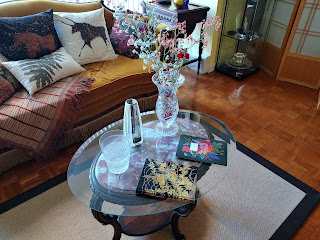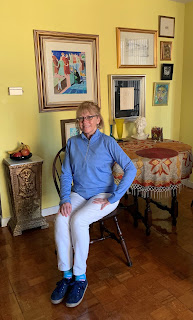Off the coast of Mozambique, the Indian Ocean is a vast expanse of ultramarine blue and the sand hot enough to burn the bottoms of your feet if you are walking barefoot. There are rusted-out shipwrecks on some of the beaches, and white birds and white sails make spotless, bright patterns on the horizon. The coastal towns parade their Portuguese cathedrals and schools for digital postcards for vagabonds with blogs when it was easy to travel, and the markets burgeon with fruit, shiny metal household items, and tables piled with whatever the vendor thinks people will buy.
And through it all is a powerful, animating presence that is, in some places, so palpably present that it almost takes one’s breath away, especially as one hears in the strains of the kizomba and indistinguishable voices that float in on the ocean breezes.
Further, the spirit blends with the spirits of the recent and distant historical past, impels people and objects in a way that breeches the interface between the material world of phenomena and the spiritual world of urge, drive, spirit, and dreams. The mystical meets the mysteries of the multiplicities of interpretive possibilities of geological processes. Simply put, the earth and the body converge.
Rudencio Morais, geologist and poet, works in Mozambique - the geographical location and the literary space - and creates bold texts that span genres and disciplines.
 |
| Rudencio Morais, Mozambique |
It is in this context that Morais constructs a powerful liminal space, exhaling and inhaling on the boundary between “what was” and “what is next.”
 |
| O Murmurar dos Búzios & As Miudezas da Alma by Rudencio Morais |
The magic of Quelimane. The first prose poem of Rudencio Morais’s magnificent collection of prose poems begins with the piece entitled “Quelimandando,” a verb that roughly translates to “Quelimaning” which was constructed from the name of the gorgeous coastal city, Qualimane. I have never visited Quelimane, which provides a point of geographical reference in for the collection, which explore spirit, language, and material reality. My travels in Mozambique did not take me all the way to the northeast expanses of the country. I did, however, spend time in Beira, where the sea shells wash up onto the beaches, and the markets resemble the ones that Morais describes in his poems.
The “buzios” in the title refer not only to the sea shells, but also the very popular method of divination referred to also as “buzios.” In this practice, four cowrie shells are cast, and the pattern they make is what indicates the answer to the question being asked. The shells themselves do not have any particular innate ability to foretell the future; they move in response to energy and vital forces. In “Quelimane,” the vital forces emanate from the place itself, and Morais describes the sights, sounds, and feeling in a way that brings the invitation to open up portals to inner dimensions, and the place where language breaks down, and a new way of perceiving and creating meaning is forged.
Eduardo Costley White (1963 – 2014). Born in Quelimane, Mozambique, Eduardo Costley White was awarded the Literary Figure of the Year award in 2001 by the Mozambican Press Association. A passage of his work appears, and in it White speaks directly to the spirits and invokes a divine possession, a passionate experience with primordial energy. Part divination and part mysticism, the poet brings to life the shells of words as he succumbs to the dark forces he has just invoked. One might think of the “poetes maudits” of fin-de-siecle France (Baudelaire comes to mind), or magical realism of the witch doctor scene in Mia Couto’s The Last Flight of the Flamingo. But these are not allusions to altered states of mind or veiled political commentaries. Instead, White equates the cowrie shell divination pieces to words, and in a powerful conflation of language, material reality (the cowrie shells). Morais takes this as the divine portal through which he enters and then descends into a maelstrom of energy of creation and recreation. Here, the poet’s words have the power to not only shape meaning, but also to steer the course of destiny as decisions are made through the buzios, through the power of a throw of the spirit-guided shells and the shell/words.
Descending into the place from which buzios energy burns. The first poems in the collection squarely confront the idea of a “physics of time” and they mull over how memories, the body, the passions, loves, and loss relate to each other. The overall feeling is that of pain but also of wonderment, as memories and nostalgia compete with each other for the poet’s sense of reality. The struggle is to assign meaning – what did it mean? Why did it happen? The love and its loss are still in a state of transition, and to capture exactly that state of being constitutes the essence of “buzios” energy.
The teaching of the dead. The power behind the casting of buzios is explored. The poet enters a hut where they invoke the energy for the buzios divination. The shells give shape to the spirits of the dead that walk with us. But, who and what are the “dead”? The dead are those who left life behind, and the poem explores how they want to teach us about pain and the serious consequences of silence. In this poem, the dead also teach us how to wipe away our tears.
The Buzios. In this amazing poem, the poet participates in a Buzios ritual, first by entering into a spell, and then taking a terrifying journey with drum beats and messages from the dead. It is hot in the hut, with its burning wood, and there is a liquid to drink. Perhaps this is all a dream, but whether dream, vision, or lived reality, it represents transition, and also the fearful, physical effects that accompany a tearing off of the veil, the ripping away of the scales that may have covered one’s eyes and kept reality at bay. Reality is no longer the docile pet you play with when you’re feeling lonely. Reality is fire in the belly.
Seeing the people we have missed. In truly brilliant words, Morais writes that reality is a mosaic, and memories create wires that hold the pieces together and create the thoroughfares for emotion and love. Morais describes eating traditional sweets while the shells are thrown. The ancestors are present, and they fill the room with love. “Love never goes away,” states the poet. “It reinvents itself, and then simply regroups us and outfits us with the people in our lives.”
From hot to cold. The buzios – the cowrie shells thrown in divination – expand the possibilities of the world and meanings. The rituals take place in hot huts, with a poet on the verge of losing consciousness, or at least passing into a light faint. This is not sustainable. The poet needs the cold nights in which meanings shrink, the atmosphere is quiet, and hands turn whitish suggesting death, or at least cool, strange pause in the journey.
The spirit is powerful in Mozambique, where the Indian Ocean takes its powerful offshore currents and either builds the hot sand beaches or transports away the sediments of the highly flood-prone rivers.
The poems take the spirit of love and ask it why pain as instructive as the intense joy of union. The buzios spirit is that of ancestral love, and also the primordial love that is nature and creation; the very definition of life. Morais, in each of his intense prose poems, describes states of being, and then the mechanisms to perceive and then reperceive; the mechanisms that poetry uses to infuse with language. The philosopher of language Ferdinand Saussure suggested that parole – the word – merges into langue – the language -- in a way that takes little building blocks of concepts and allows them to create a great river where communication takes place. In Buzios, Morais takes us into that river of divine communication, not only with the spirits of those who loved, but also for those who can and will love.


























